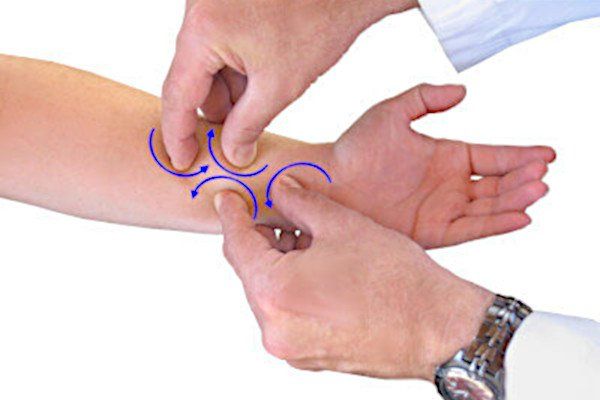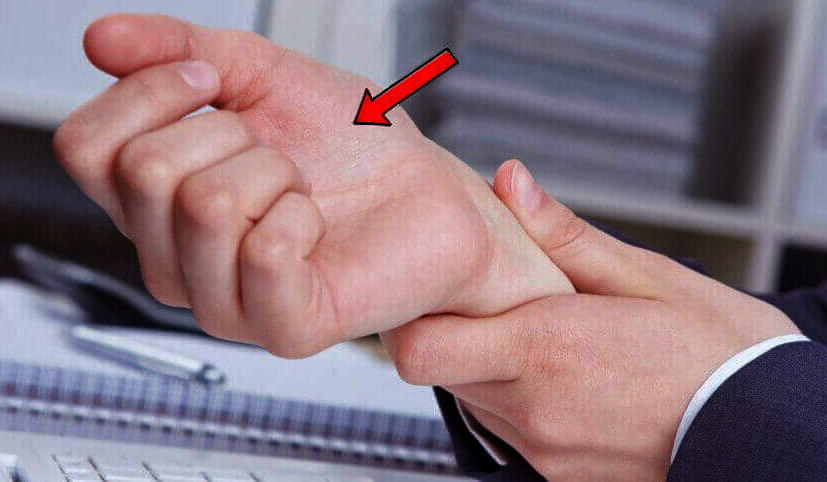Numbness in Fingers and Hands
From Dr. Z - Carpal tunnel syndrome specialist
Numbness in Fingers & Hand
Maybe it's Carpal Tunnel Syndrome
If you have numbness in your fingers and/or hand, it could be a sign of carpal tunnel syndrome. In fact, having numbness in fingers and hands is one of the key symptoms of this disorder.
If numbness appears suddenly, then it may be due to a temporary nerve injury in your hand. This may happen while hammering something hard, lifting heavy objects or typing too long on a keyboard.
Many occupations require stressful use of the hands, and finger or hand numbness is an occupational hazard. (That's why wearing protective gloves is important.) Therefore, if it's a temporary injury that's causing your numbness, then it will usually disappear by simply resting your hand for a week or two.
- FIND OUT: do you have carpal tunnel? No strings attached self-test.
However, hand or finger numbness which persists or keeps coming back is the sign of something more serious. Today, in the United States, the major cause of numbness in fingers and hands is carpal tunnel syndrome.
However, other, less likely reasons for the numbness can be stroke, cubital tunnel syndrome, thoracic outlet syndrome, diabetic neuropathy, vitamin B deficiency, certain medicines, cervical radiculopathy, Raynaud's phenomenon, Lyme disease, and hypothyroidism.
Want to know how severe your carpal tunnel really is?
Take this 60 second Quiz designed by Dr. Z.
4 Stages of Carpal Tunnel Syndrome
Patients with carpal tunnel syndrome usually go through 4 stages of the disorder. They are:
- Mild stage
- Moderate stage
- Severe stage
- End stage
The signs and symptoms of each stage are a bit different. They also dictate how you should treat the condition so it doesn’t worsen.
Mild Stage Carpal Tunnel Syndrome
As the disorder begins, it's hardly noticeable. Carpal tunnel symptoms unusually first appear on the palm, thumb, and the next 3 fingers. Carpal tunnel never affects the little finger.
Most people who are getting carpal tunnel syndrome first really begin to notice the finger or hand numbness at night, when trying to sleep. They wake up, often trying to shake out the numbness in their hands.
Actually, in its mild stage, as carpal tunnel begins to emerge, numbness in fingers and hand becomes more pronounced when your hand is resting. When your hand is active and working, the numbness usually subsides. Again, this is only during the mild stage.
Pain may or may not appear during the mild stage. Pain may begin as a feeling of puffiness, but actual swelling is not there. Pain could also feel like a burning or soreness, as though you've over-worked you hand.
Tingling (prickling or pins-and-needles) may also be felt. However, this is usually a sign of more advanced carpal tunnel syndrome.
Moderate Stage Carpal Tunnel Syndrome
As the disorder advances further to the moderate stage, numbness in fingers begins to appear during the daytime. It will also be present when your hand is working.
Numbness is generally more intense and will rob you of your sleep. While sleeping, some patients feel the need to hang their hand off the bed to find relief. Waking up to shake out the numbness becomes a nightly occurrence.
Other symptoms begin to escalate during the moderate stage. Pain will almost surely increase in intensity. It can present as throbbing, sharp, or a dull ache.
Tingling will also intensify. It is usually concentrated at the fingertips and thumb area.
Shooting electric shocks may also occur when trying to grasp or hold an object. These shocks are generally felt from the hand to the forearm.
Dexterity may also sufferer. For example, you may find it clumsy to button a shirt, tie a shoelace, or pick up coins or keys. Your fingers may feel like fat sausages that just don’t work properly.
Your
grip strength may or may not be affected during the moderate stage. It may be difficult to turn a doorknob, hold a pot or pan, or even lift an infant.
Severe Stage Carpal Tunnel Syndrome
The severe stage of carpal tunnel syndrome is when symptoms are at their maximum intensity. The symptoms most intense are generally pain and numbness. In fingers and hands, numbness is described as “crushing” or “cruel”. Patients say it feels like their hand is in a vice all the time.
Pain can be achy or sharp. But it’s very intense nonetheless. Patients describe the pain as “punishing” and an endless staircase of pain.
Tingling intensifies, as do the shooting electric shocks upon making a fist or grasping. Loss of grip strength and dexterity are also maximal.
In the severe stage, many patients also lose the ability to feel hot or cold temperatures. This is primarily at the fingertips. Patients must be careful to not burn themselves in the kitchen due to the loss of feeling.
This is perhaps the saddest stage for anyone who talks to the patient. Due to the intense symptoms, the patient often says,
“I want to cut my hand off.”
End Stage Carpal Tunnel Syndrome
This is the final stage of carpal tunnel syndrome. Hand devastation is catastrophic and complete because your median nerve is essentially dead.
The median nerve no longer carries signals of sensation or motor control to your hand. Prior stages of carpal tunnel syndrome were reversible. But the end stage carpal tunnel is not. It means there's nothing that can be done to restore your hand - not even surgery.
As a result of the median nerve dying, your thumb (thenar) muscle degenerates or undergoes atrophy. This muscle, located at the base of your thumb is normally plump and strong. But in the end stage, the muscle flattens out and appears wrinkly.
As a result of the median nerve dying, your thumb and fingers cannot grasp. Your hand is in a permanent claw position due to the nerve damage. (This is described as "claw hand".) Essentially, you cannot grasp objects with your hand. Patients describe it as a useless claw.
In a cruel twist of fate, pain usually diminishes drastically in the severe stage. However, any numbness in fingers and hand remains intense. Tingling persists as well.
How to Treat Carpal Tunnel Syndrome
In the mild stage of carpal tunnel syndrome, relief of numbness and pain are usually achieved in a few weeks by just resting your hand. You simply stop the activity that’s stressing it and symptoms should resolve.
At the very least, protect your hand with gloves, padded handles, etc. Rest alone is highly effective – but only if you catch symptoms in the mild stage.
Treating the moderate and severe stages of carpal tunnel syndrome require more aggressive therapy. Rest alone is not enough. According to the American Academy of Orthopedic Surgeons, most doctor will advise patients to try a host of nonsurgical techniques to relieve symptoms. These include:

Usually a combination of the above remedies works best. In the moderate and severe stages, numbness and pain symptoms usually resolve in a matter of 4-8 weeks using a combination of these remedies.
If these nonsurgical therapies fail, most patients are advised to have
carpal tunnel release surgery at this stage. You can have either
open release or
endoscopic release surgery.
Recovery times vary, mostly because
postsurgical pain varies from one technique to another. Carpal tunnel surgery in the moderate stage has approximately
50-60% success rate.
Conclusion
If you feel occasional numbness in fingers and hands, then it might be that you’re overstressing your hands. But if these symptoms are chronic, chances are you have carpal tunnel syndrome. Along with the numbness, this progressive disorder can also cause pain, tingling, weakness, and dexterity problems. As you advance through the 4 stages of carpal tunnel syndrome, symptoms worsen. It’s also more difficult to restore your hand with therapy as the condition advances.







